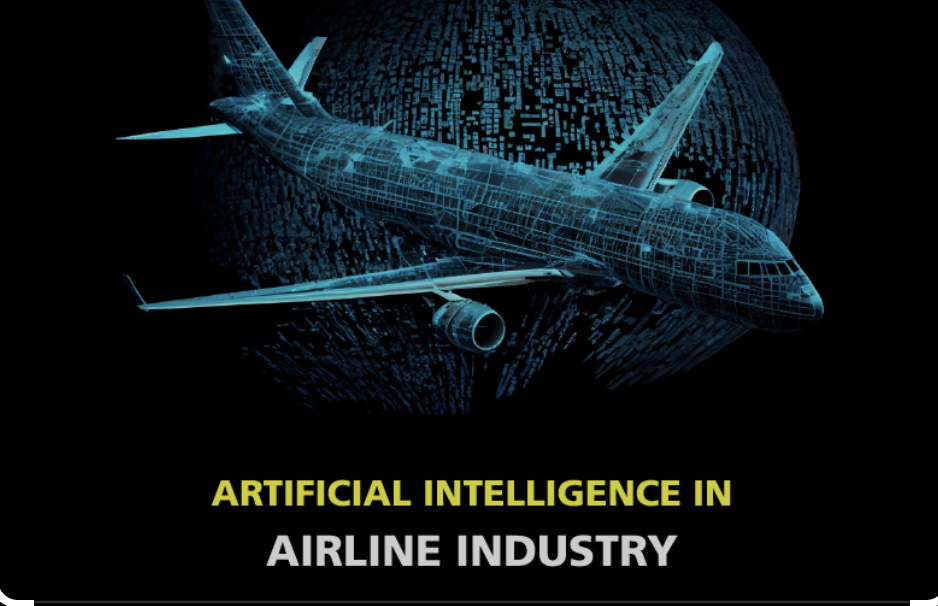Artificial intelligence (AI) was first initiated in1950s (Bini, 2018), which defined as the machines displaying human-like intelligence. In the current age marked by swift tech progress and the massive surge in “big data”, AI has evolved from a conceptual idea to a widespread practical implementation like never before (Helm et al., 2020).
Airline strategy and development are decided by the competitive landscape and effectively managing resource (Pérez-Campuzano et al., 2021). Especially during covid-19, the airline conventional business strategy and decision-making process experienced a Unprecedented challenge (Budd et al., 2020). However, with the usage of Machine Learning (ML) and AI, the airline has optimized its workflow and successfully navigated through the challenges posed by the pandemic.
The airline industry employs ten primary uses of AI and data science (Altexsoft, 2020). It includes revenue management, air safety and airplane maintenance, feedback analysis, messaging automation, crew management, fuel optimization, in-flight sales and food supply, fraud detection, in airport self-service and flight management. This series will be split into two separate blog posts. The first will delve into how airlines are utilizing AI in revenue management, while the second will explore the profound impacts of this technology on the aviation industry.
Revenue management can be described as the skill of optimizing profit from a restricted product capacity over a set timeframe by ensuring each product is sold to the ideal customer, at the optimal moment, and for the appropriate price (Pak & Piersma, 2002). In other words, airline revenue management is about strategically pricing those tickets to ensure that each flight achieves its maximum revenue potential. At its core, it aims to offer the right price to the right passenger, all while ensuring the aircraft maintains a high load factor.
This is where Artificial Intelligence (AI) steps in.Airlines have started harnessing the power of AI to maximize the marginal revenue of every flight. But how does AI achieve this? It’s all in the data. With advanced deep learning models, AI can swiftly process vast amounts of information, helping airlines to forecast demand with pinpoint accuracy. This goes beyond just understanding when a passenger might want to fly. AI delves deep into factors such as booking pace, competitor pricing, and historical data. This dynamic approach allows airlines to adjust ticket prices in real-time. Furthermore, AI is not just about setting the right price; it’s about smart allocation. The technology can optimize how seats are allocated across different booking classes, ensuring that the revenue potential of each flight is fully tapped.
However, while AI has significantly transformed airline revenue management, it’s not without its challenges. In my next blog post, I’ll dive deeper into these challenges, drawing on personal experiences to shed light on the intricate world of AI in the airline industry. Stay tuned!
Reference:
Bini, S. A. (2018). Artificial intelligence, machine learning, deep learning, and cognitive computing: what do these terms mean and how will they impact health care? Journal of Arthroplasty, 33(8), 2358–2361. https://doi.org/10.1016/j.arth.2018.02.067
Helm, J. M., Swiergosz, A. M., Haeberle, H. S., Karnuta, J. M., Schaffer, J., Krebs, V. E., Spitzer, A. I., & Ramkumar, P. N. (2020). Machine learning and Artificial intelligence: definitions, applications, and future directions. Current Reviews in Musculoskeletal Medicine, 13(1), 69–76. https://doi.org/10.1007/s12178-020-09600-8
Pérez-Campuzano, D., Ortega, P. M., Andrada, L. R., & López-Lázaro, A. (2021). Artificial Intelligence potential within airlines: a review on how AI can enhance strategic decision-making in times of COVID-19. Journal of Airline and Airport Management, 11(2). https://doi.org/10.3926/jairm.189
Budd, L., Ison, S., & Adrienne, N. (2020). European airline response to the COVID-19 pandemic – Contraction, consolidation and future considerations for airline business and management. Research in Transportation Business and Management, 37, 100578. https://doi.org/10.1016/j.rtbm.2020.100578
Altexsoft (2020, February 21). 10 Ways Airlines use artificial intelligence and data science to improve operations. AltexSoft. https://www.altexsoft.com/blog/engineering/ai-airlines/
Pak, K., & Piersma, N. (2002). overview of OR techniques for airline revenue management. Statistica Neerlandica, 56(4), 479–495. https://doi.org/10.1111/1467-9574.00213

